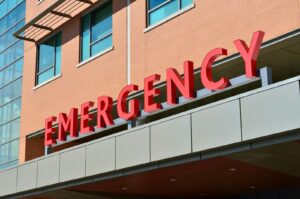New research, published today at the European Emergency Medicine Congress, has revealed a link between increased levels of particulate matter and an increase in the number of patients attending hospital emergency departments.
This correlation persisted even when pollution levels were within World Health Organization guidelines.
The researchers examined data on 307,279 patient visits to the emergency department at Careggi University Hospital in Florence between 2019 and 2022.
This was compared with the daily levels of PM2.5 and PM10 near patients’ home addresses for up to 30 days before they went to hospital.
They found that within a few days of an increase in the level of air pollution, there was an increase of between 10-15% in the number of daily patients admitted to the hospital’s emergency department.
An increase in the number of trauma cases and patients with breathing difficulties and skin conditions was particularly evident.
The rise in trauma cases was more notable in younger patients, while those over 65 were more likely to present with breathing difficulties.
The research was presented by Dr Andrea Rossetto an emergency medicine resident at University of Florence and Careggi University Hospital, Florence, Italy, and a PhD Student at Queen Mary University of London, UK. On this research Dr Rossetto worked with Dr Alessio Gnerucci from the Department of Physics and Astronomy, University of Florence, Italy
Dr Rossetto said: ‘We know that air pollution is damaging for health, especially in terms of breathing and lung diseases, and this is likely to have an impact on our health services. However, there is limited evidence on the impact of fluctuations in air pollution on the overall workload in the emergency department.
‘At our hospital most trauma patients have been involved in road traffic collisions. Traffic is also a primary driver of increased air pollution in urban areas. It is likely that heavy traffic is directly responsible for the increase in trauma cases and indirectly for more patients presenting with breathing difficulties linked to air pollution.
‘This means we’re seeing more patients with breathing difficulties at a time when the emergency department is already under stress with more trauma cases, with potentially worse outcomes for such patients.’
Dr Barbra Backus, chair of the EUSEM abstract selection committee and an emergency physician in Rotterdam was not involved with the research but said: ‘This study adds to existing evidence that air pollution, even at concentrations within WHO guidelines, is harmful to our health and our health services. Understanding this link could allow hospitals to prepare for surges in patient numbers and take action to reduce overcrowding in the emergency department. Hopefully further research will provide even more information on this topic.
‘However, if we want to protect our health and reduce the burden on hospitals, we need to do all we can to minimise emissions and reduce exposure to air pollution.’


















Leave a Reply